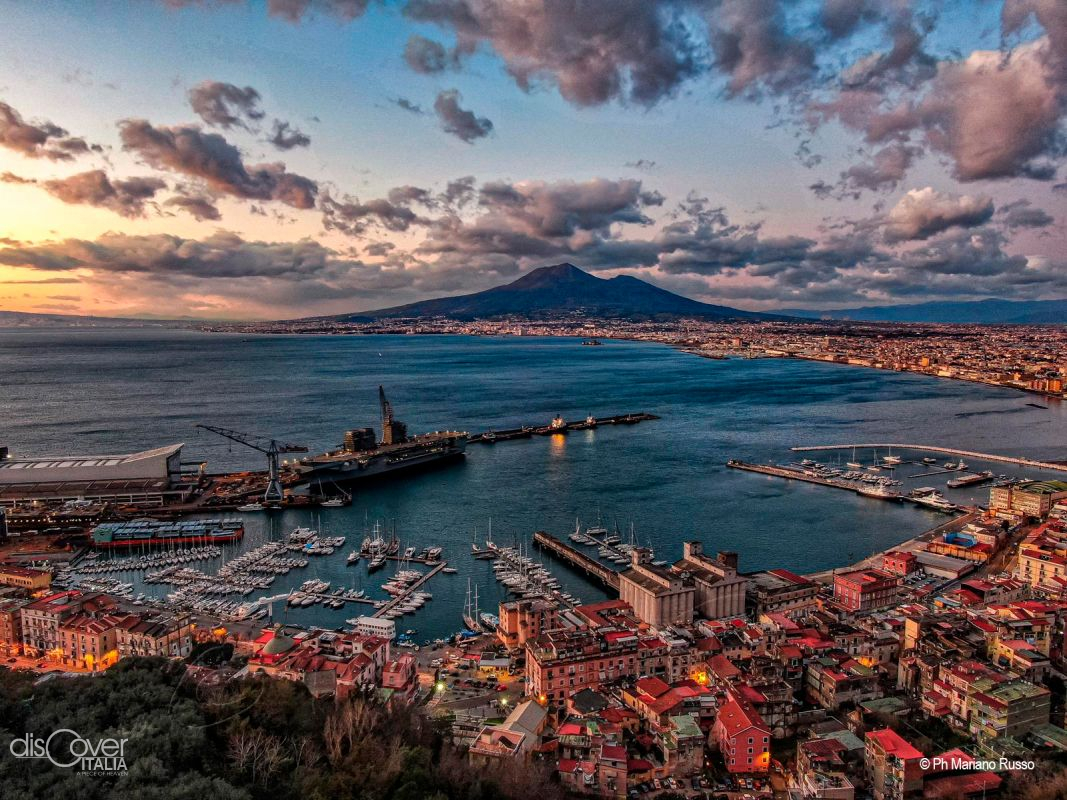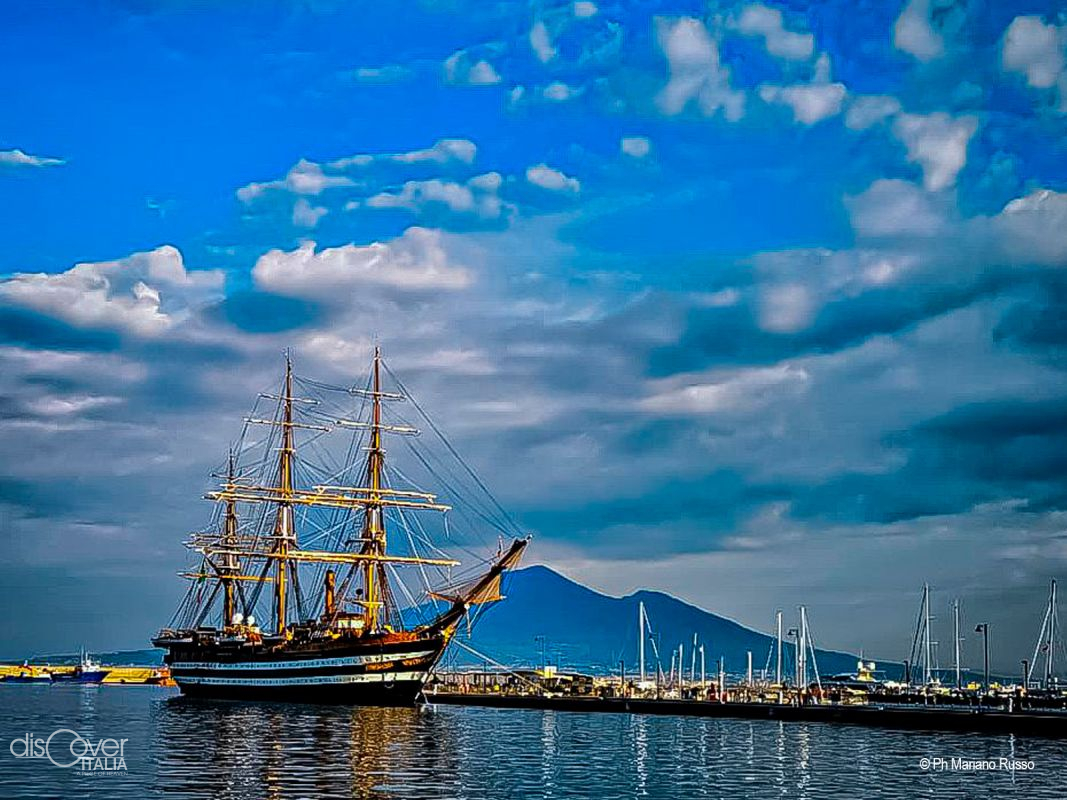Returning to the sea, on the slopes of Monte Faito, there is Castellammare, whose name, according to some thesis, derives from «castrum ad mare», in other words the sea fortress built in the 9th century, around which the small city founded by Hercules is developed, and which was buried by the eruption of 79.
 From an archaeological point of view, the area of the Varano promontory is interesting. It is the most significant and it was inhabited during the period between the first century BC and the fatal eruption of Vesuvius. Here there were many villas and thermal structures.
From an archaeological point of view, the area of the Varano promontory is interesting. It is the most significant and it was inhabited during the period between the first century BC and the fatal eruption of Vesuvius. Here there were many villas and thermal structures.
Castellammare is famous for many aspects. Starting with the shipyard which, founded in 1783, is the oldest in Italy. Here three glorious ships were born, such as the Amerigo Vespucci, the only training ship of the Italian Navy, important transport ships and large ferries. The construction of the bathyscaphe Trieste by Auguste Piccard was also completed there. More recently, we have do underline the regained importance in the nautical tourism sector with a well-equipped marina. But it is especially for the sources of drinking water and the thermal baths that it was once called “Metropolis of waters”, Castellammare, is renowned. The hydrological heritage is composed of 28 types of different mineral waters, divided into sulphurous, calcium bicarbonate and medium minerals, which have given an impulse to thermalism: since mid-1800 it has represented an important economic and touristic item. There are two thermal establishments, one in the old town and another one in the hilly area, where it is also possible to carry out some treatments. The Antiche Terme were inaugurated in 1836, based on a project by the architect Catello Troiano, and they became not only a wellness centre but a real cultural centre. The Nuova Terme, on the Solaro hill, near the district of Scanzano, were inaugurated on the 16th of July 1964 and extend over an area of over 100.000 square meters. The complex is divided between the park for mineral water treatments and the building dedicated to therapeutic treatments, with avantgarde equipment, where physiotherapy, hyperbaric medicine, massages, muds, inhalations with sulphurous waters, rehabilitation, dermatological treatments, aesthetic and gynecological cares are practiced. Finally, it is important to remember the role of the waters on a commercial level: the water of the Madonna and Acetosella, among the best known and already appreciated by Pliny the Elder, who recommended it to those who suffered from calculosis, are bottled and sold everywhere.
The Antiche Terme were inaugurated in 1836, based on a project by the architect Catello Troiano, and they became not only a wellness centre but a real cultural centre. The Nuova Terme, on the Solaro hill, near the district of Scanzano, were inaugurated on the 16th of July 1964 and extend over an area of over 100.000 square meters. The complex is divided between the park for mineral water treatments and the building dedicated to therapeutic treatments, with avantgarde equipment, where physiotherapy, hyperbaric medicine, massages, muds, inhalations with sulphurous waters, rehabilitation, dermatological treatments, aesthetic and gynecological cares are practiced. Finally, it is important to remember the role of the waters on a commercial level: the water of the Madonna and Acetosella, among the best known and already appreciated by Pliny the Elder, who recommended it to those who suffered from calculosis, are bottled and sold everywhere.




Comments powered by CComment